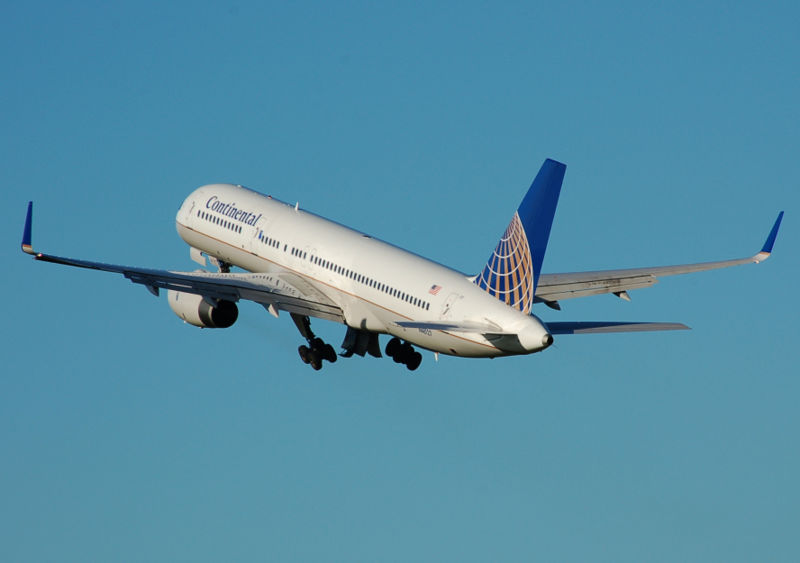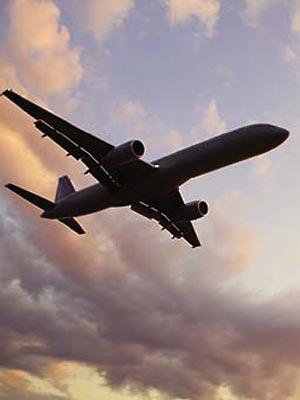Ever Wonder: |
 Who you talking to?Have you ever been on frequency with air traffic control (ATC) and heard an airliner’s call sign and wondered just which airline it is? I sure have! Premier Flight Center, where I work, is a busy flight school based out of Hartford-Brainard Airport (KHFD) in Hartford, Connecticut, and we’ve got Bradley International Airport (KBDL) just north of us. We regularly receive VFR flight following, and we also do a lot of IFR training, so we are on Bradley's frequency quite often. Beyond that, from our corner of Connecticut, it’s not too tough to end up in the airspace owned by Boston or New York. Accordingly, I hear an assortment of call signs. Oh yes, and I’m a LiveATC.net fan as well… Continental Airlines (pictured above) is pretty straight forward. They're called “Continental”... I figured out “Cactus” is the call sign for US Airways, but that only came to me through the media coverage of the comms between ATC and the highly skilled pilots of “Cactus 1549”, the flight that landed in the Hudson River in January 2009. I think “Brickyard” is another awesome call sign, but I never could figure out which airline they are. Who knew?It was a dark and rainy night... I was bored and at home so I began rummaging about the FAA’s web site (yes, I’ve been told I “really need to get a life”). Regardless, I found out that the FAA has a master document of all the airlines who have approved call signs – I also learned that the proper name for a “call sign” is a “telephony designator”. I’m sure this isn’t news to all of the ATC folk out there, but to a lowly CFI, I thought it quite a find. The document is Order JO 7340.2H – “Contractions”. Chapter 3 has a comprehensive:
So, now I now know that “Brickyard” is Republic Airlines from Indianapolis, Indiana! All of you NASCAR fans will immediately see the significance! 
Ok then, how do I get a call sign?Receipt of a call sign (ah yes, a “telephony designator”) isn’t simply a matter of filling out a form. Turns out you have to have a “need”. And not surprisingly, JO 7340.2 specifies the requirements that must be met to request a 3-letter identifier and/or call sign – Feel free to check out Chapter 1, Section 4 if you're particularly curious. Pilots who have flown around Connecticut and talked to Bradley Approach or Brainard Tower might have noticed that it’s common to hear pilots and controllers use the call sign “Lifestar 1” or “Lifestar 2” on the radio. “Lifestar 1” and “Lifestar 2” are the emergency air ambulance helicopters that operate in central and southeastern Connecticut. Yet, if you look, you’ll see that they don’t appear in the lists in JO 7340.2. So what gives?Well, it seems that operators can petition for “local telephony designators”. In their case, by having a local designator, the Lifestar pilots are quickly recognized by ATC as an emergency operation and they get the deferential treatment they and their patients deserve. However, the “Lifestar” pilots can only use their call sign with ATC facilities that know about them. This awareness is fostered through a letter of agreement between the hospitals that operate them and the ATC facilities they’ll have regular contact with during their day to day activities. Oh, one further point: Local designators aren’t for IFR use… “Local telephony designators will be used only for communications with local airport traffic control towers/facilities for VFR/SVFR operations. A Letter of Agreement (LOA) is required between the local tower/facility and the requesting company/applicant. The LOA will contain verbiage which ensures the local telephony is used only with facilities which are signatories to the agreement.” JO 7340.2B 1-5-2(a) I guess that means no telephony designator for me?Nope, probably not, which means that my dreams for playing a wonderfully devious practical joke probably are dashed too. Here was my idea: For a while, I worked for what I concluded was a less than reputable flight school. I’d come to this realization for numerous reasons, but most especially because I’d grown quite suspicious about their maintenance practices for the airplanes. During my short tenure there, I’d joke that I wanted to petition – on their behalf – for the call sign “Death Trap” for the fleet. At the very least, it would have gotten attention on the radio, and it probably would have sent people scurrying to see if there was a list of call signs to see who we were! |
Article by: Terry Keller Jr. |
Editor's Note: If you'd like to enjoy a wonderful reader response to this article by retired American Airlines Captain Tony Vallillo, please Click here |
